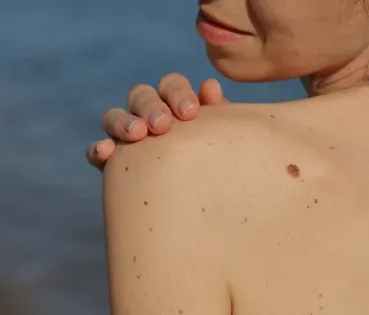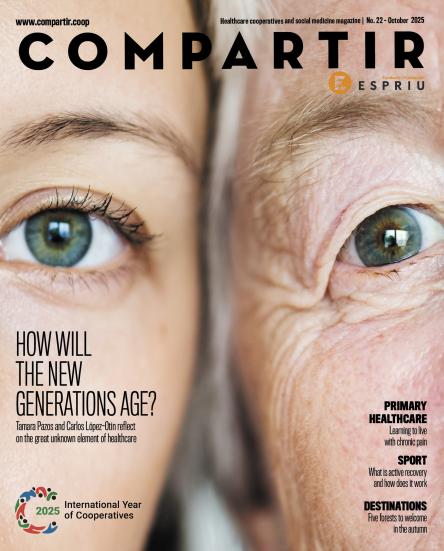
How to enjoy the sun without getting burned
During the summer it is important to adapt routines and habits to the new environmental conditions, which have become slightly more extreme and so, prevent health problems.
Summer has arrived and with it, the sun has reached its greatest splendour. To ensure that your health doesn’t suffer, it is essential to learn to live with it using the right protection. The sun rays will provide doses of Vitamin D, which are so important for bone health and they will also improve moods due to their serotonin secretion.
But if we do not protect ourselves, the sun can cause sunspots, the appearance of wrinkles and even more serious illnesses such as skin cancer, which is the most frequent type in Spain. And beyond these effects, excessive exposure to the sun can cause eye problems such as photokeratitis, conjunctivitis or dry eye.
Burning, the great danger
In order to avoid sunburn, it is crucial to protect your skin with a suitable sun cream and to apply it whenever necessary. Eulàlia Baselga, Head of the Dermatology Service at the Barcelona Hospital Sant Joan de Déu and a consultant doctor at Assistència Sanitària, recalls that it is also important to “protect yourself with tightly-woven cotton clothing in dark colours.” Seeking out the shade, avoiding sunbathing in the central hours of the day and continuously hydrating yourself are other good habits that we must take on in the summer. If, in spite of these preventive steps you get burnt, Baselga recommends the use of anti-inflammatory treatments, which “help to minimise the appearance of blisters.” And at the same time, apply products on to the skin that calm the discomfort derived from the burns, “particularly the initial itching.”
Preventing these burns is essential for your health because they are related to the appearance of melanomas.
Skin prevention and care
This type of skin cancer is diagnosed in around 80,000 people in Spain and “it is linked to these burns, although they may have occurred in childhood,” Baselga indicates. In fact, the risk of melanoma in adults is doubled if the person in question suffered from sunburn during their childhood or as a teenager. To prevent melanoma, special attention must be paid to moles or sunspots. If any change in colour, size, shape or edge occurs, an expert in dermatology must be consulted.
During childhood, adults must apply the photo-protective creams to the children. Baselga insists that “children must be educated in good habits regarding the sun, in the same way that they are taught to eat well or to be responsible about their homework.” It is important to teach them about the use of photo-protection creams, but also get them used to “wearing peaked caps, to seek out the shade and not try to get brown,” she adds. She also warns that the skin has a memory and that all the excesses that occur from an early age will have consequences in the future.
Furthermore, it is essential to be careful about the temperature and to avoid sunstroke, which occurs when the body temperature rises above 40 degrees. The symptoms include confusion, irritability, delirium, nausea, vomiting, reddened skin or fast breathing and can occur at any age, with children and the elderly being more prone to suffering from this.
How to take care of your eye health
Society has gradually become aware of the importance of protecting your skin during the summer. But this is not the case regarding your eyes. Solar radiation accelerates eyesight ageing process, as it does with the skin and it also increases the risk of suffering from pathologies such as cataracts, conjunctivitis, dry eye or age-related macular degeneration, which today, is one of the most important causes of irreversible blindness from the age of 60 onwards. The National College of Opticians-Optometrists warns that, in the summer prolonged exposure to the sun increases the risk of suffering from eye diseases by up to 25%.
In order to guarantee good eye health in the summer, it is advisable to use quality sunglasses. That is to say, ones that block the ultraviolet rays A, B and the infrareds; which are homologated and meet all the healthcare controls. It is also important to hydrate them with artificial tears and therefore avoid excessive dryness of the eyes that is usually caused by the heat or the use of air conditioning units.
Which is the right sun protection cream?
The main advice is for its sun protection rate to be high: a minimum of 50 SPF is recommended. Baselga explains that “a 50 protection factor means that a person can be exposed to fifty times the amount of time that their skin needs to turn red.” Additionally, the photo-protectors have evolved a great deal and in many cases, the expert indicates “it is no longer necessary to apply them 30 minutes before exposure to the sun because they are absorbed almost immediately.”
Buying creams that promise express tanning is dangerous, as generally “they include substances that are harmful to the skin and do not give enough protection against the UV rays. If anything, they can bring about burns,” she points out. And remember that all these steps must also be taken on cloudy days: “We have the feeling that the sun isn’t touching us and it is a mistake because, the truth is clouds filter the sun’s radiation very little.”




